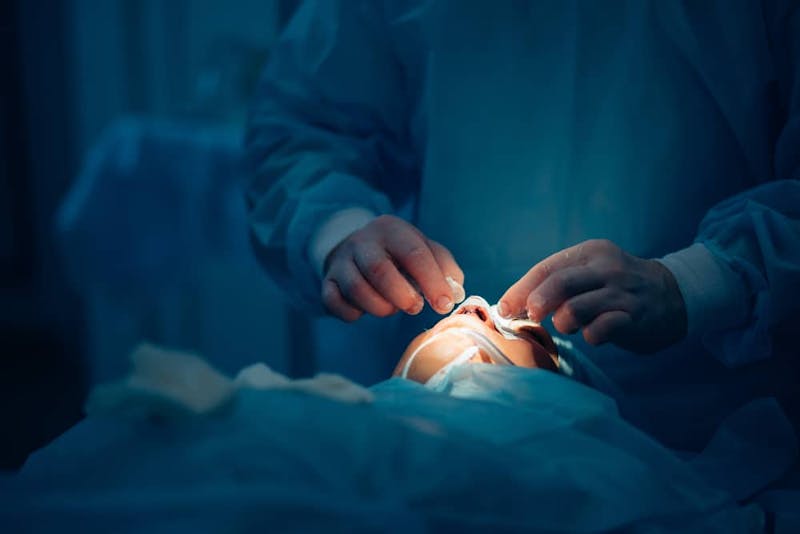Next Steps Schedule a Consultation
Take the next step by scheduling a private consultation with Dr. Ahn. He and our expert team will guide you toward natural, confidence-boosting results that reflect you.
Contact Us
What can be done to a nose?
HOW TO MAKE A LARGE TIP (BULBOUS) MORE REFINED AND SMALLER
SKIN THICKNESS
HOW TO CHANGE THE PROJECTION (MOVE THE TIP OF THE NOSE CLOSER TO OR FURTHER FROM THE FACE)
During the consultation, Dr. Ahn will measure the tip projection using computer imaging. If he determines that the tip is overprojected (too far from the face) he then may recommend deprojecting the tip, moving it closer to the face, to improve the proportions and balance. The opposite is true as well for an underprojected tip.
Moving a tip closer to the face usually involves cutting the tip cartilage and then precisely overlapping the segments so that the tip moves back the correct distance. Moving the tip away from the face, increasing projection, depends on using cartilage grafts to provide a strut of support. These grafts are often called septal extension grafts or strut grafts.
HOW TO LOWER THE BUMP ON PROFILE
The “dorsal hump” is the bump on the nose, made of bone and cartilage, that is seen on the profile view. It can be familial (your family’s nose) or the result of trauma. Bumping the nose can cause growth of bone.
To lower the bony part, a rasp (a tool that looks like a fine file) is used to gently take down the convexity. To precisely lower the cartilage, Dr. Ahn uses a micro blade to remove segments that are as thin as less than a millimeter. Dr. Ahn feels that it is critically important to lower the bump slowly, carefully and with great attention to detail, as a millimeter change can make a significant difference on the result.
HOW TO STRAIGHTEN A TWISTED NOSE
During his residency training, Dr. Ahn was fortunate to train at , where many patients had “twisted” noses as the result of trauma. Because there were so many people with crooked noses, Dr. Ahn and his fellow residents were able to study how best to treat a twisted nose with surgery. As such, Dr. Ahn has extensive experience with operating on the twisted nose.
The twisted nose is often the result of multiple episodes of trauma, or at least one significant incident that resulted in a broken nose. There are many factors that may contribute to the twisted nose including: a deviated septum, misshapen cartilage and displaced, previously broken nose bones. All of these need to be addressed during rhinoplasty to make the nose straighter. Unfortunately, it is not always possible to make the nose perfectly straight since so many forces have been holding the nose in a twisted position.
HOW TO CHANGE THE OVERALL APPEARANCE OF THE NOSE WHILE MAINTAINING ETHNIC CHARACTERISTICS
Careful and experienced rhinoplasty surgeons are sensitive to the concept of ethnicity preservation in rhinoplasty surgery. Not everyone wants a stereotypical northern European nose. In fact, most patients want to retain the characteristics of their specific ethnicities. They just want a nicer version of their current nose and a result that does not make them look like an overall different person. Dr. Ahn ensures that during the consultation there is excellent communication in terms of the patient’s goals. For example, some want to remove a familial bump and make the nose straight while others want to retain some of the bump but just want it to be smaller. Dr. Ahn takes great pride in his ethnic preservation rhinoplasties.
If you would like to learn more about rhinoplasty, please schedule a personal consultation with a double board certified facial plastic surgeon like Dr. Ahn. He can recommend an appropriate course of treatment after evaluating your aesthetic needs and goals. Contact the Aesthetic Wellness Center by calling or emailing us today.